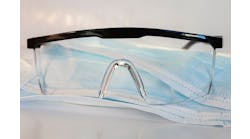I know a lot of shop owners roll their eyes at the mention of “going green.” If that’s you, I can’t blame you; it’s a phrase that has been used ad nauseum in recent years, both within and outside the collision repair industry.
We have seen no shortage of press release_notess from shops that have “gone green” in one way or another, most notably through the transition to waterborne paint. It’s not a radical development, but for an industry often viewed by consumers as dirty and polluting, the message of environmental responsibility is still important to send.
Many in the industry have found value in touting their environmental efforts, regardless of how big or small they might be. Shops that have not yet taken steps toward running a more sustainable, environmentally friendly business will likely feel financial repercussions. Most notably, they’re in danger of falling out of favor with customers who are increasingly eco-conscious. It’s no longer a niche; customers have come to expect basic efforts, such as recycling and the use of energy-efficient fixtures and appliances. They will seek out shops that share their values.
Green efforts don’t only win over customers, they help cut costs and improve shop efficiency. Steps don’t have to be huge and expensive; shops don’t need solar panels and wind turbines, though some have found success with those tactics. Green is really an offshoot of lean—it’s about working smarter and performing better as much as it is about being environmentally responsible.
We felt the topic was important enough to warrant the feature in this issue, “Being Green in 2013,” which details a host of processes, trends, tools and more from shop owners, suppliers and industry consultants. The goal is to show you what your options are for building a truly environmentally friendly, sustainable business in 2013 and beyond.
As Matt Dewalt, vice president of Scott’s Collision Centers in eastern Pennsylvania put it:
“The key is figuring out what you can do to stand out. I mean, what’s really green today.”
Also in this issue, you can read about what types of green trends are taking place in the U.K. collision repair industry. Columnist Jon Parker explains that the U.S. is not alone in this trend.
If your facility has invested in eco-efforts, please shoot me an email and share what you’ve done and how it has benefitted your business. We might feature your shop in an upcoming issue of FenderBender.
Elsewhere in this issue, you’ll find a case study on a shop that revamped its management processes after growing too fast , and an inside look at the work philosophies and strategies of a successful production manager.
In this month’s Strategy section, we explore the all-important process of building a strong shop culture, we get feedback from four loyal customers on how their shops of choice won their business, and we show you how to incentivise technician training.
Enjoy the read, and stay tuned for a brand-new section in next month’s issue.
Jake Weyer
[email protected]



